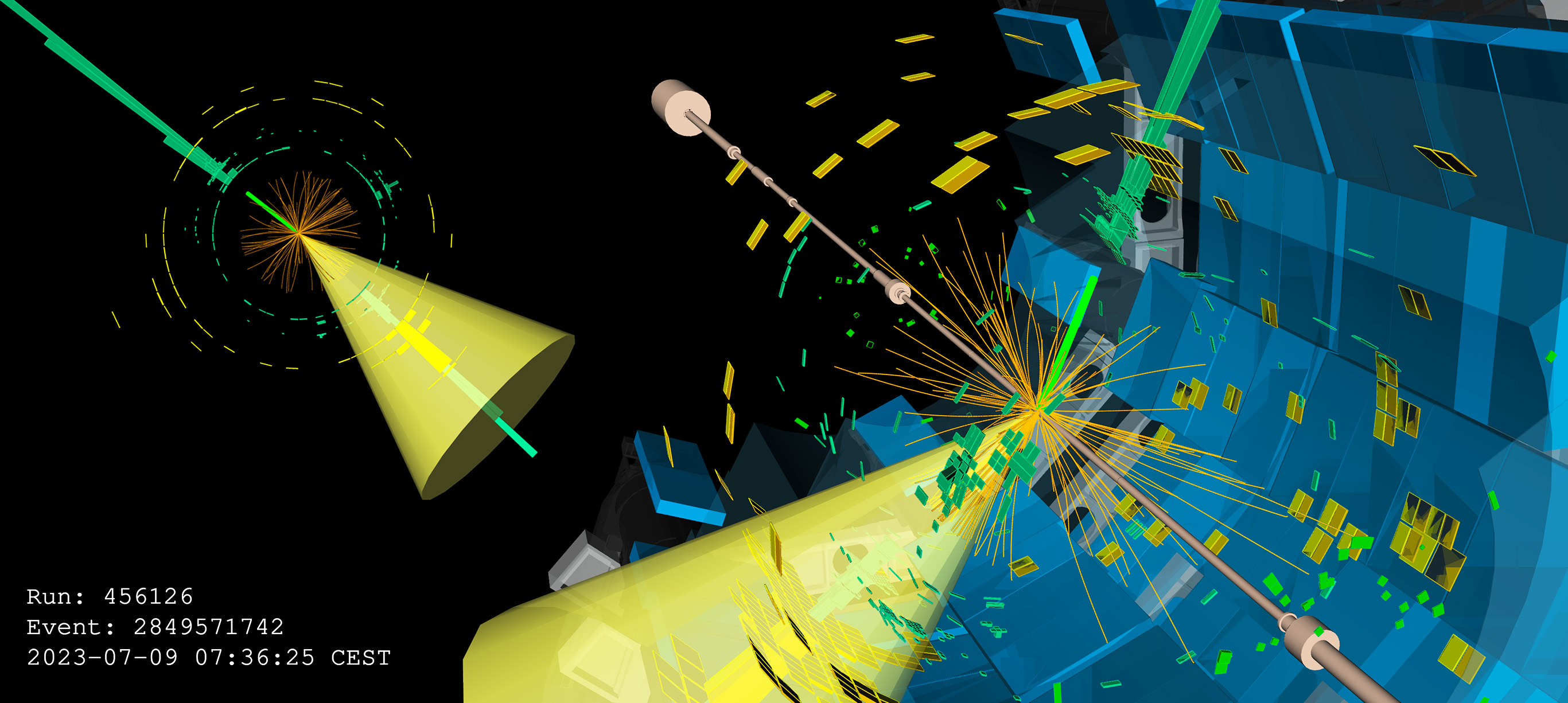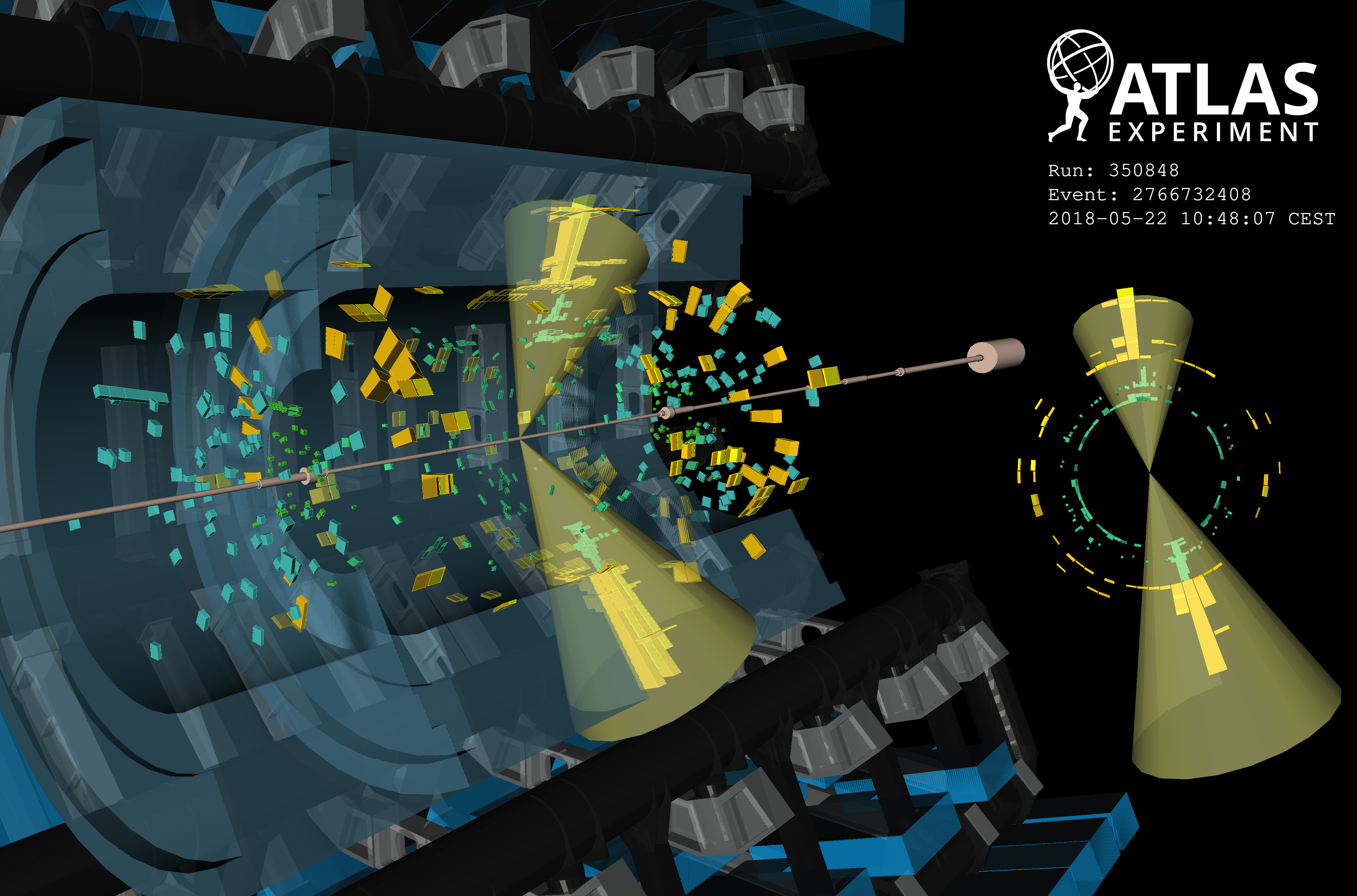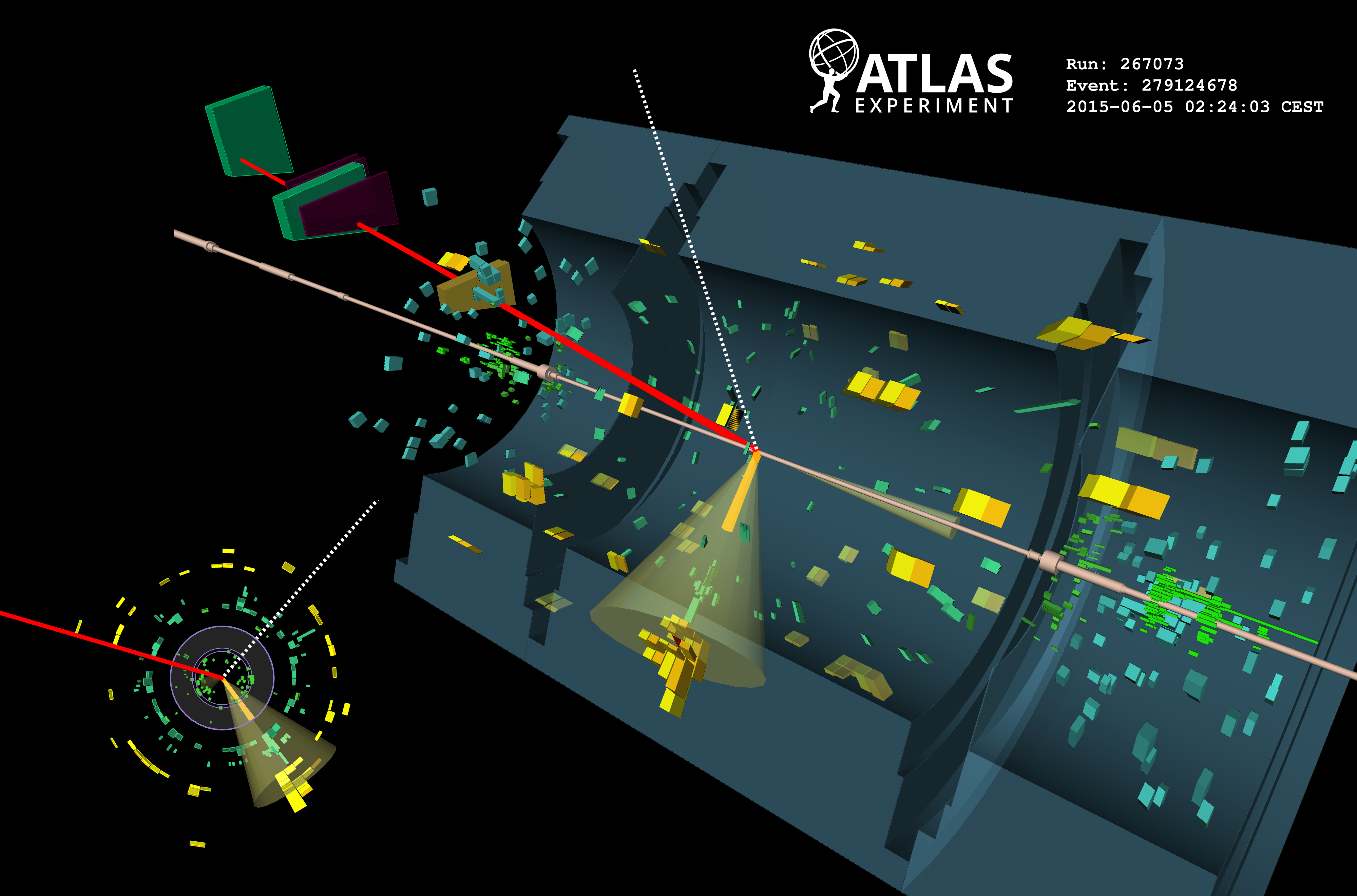Turning the LHC into a Lepton-Proton Collider in the search for leptoquarks
28 August 2025 | By
All matter in the universe is made up of just two fundamental building blocks: quarks and leptons. Intriguingly, both have three distinct families or “generations”. For example, the electron and its associated neutrino form the first generation of leptons, while the up and down quarks form the first generation of quarks. Where does this striking similarity between the particle families come from?
This question could be answered by leptoquarks – hypothetical particles that bridge the gap between leptons and quarks by allowing them to transform into each other. If they exist, the LHC might be able to produce them directly through collisions between quarks and leptons, as shown in Figure 1. At first glance, this might seem impossible, since the LHC is a proton collider, not a lepton collider. But protons are complex particles, made of quarks and gluons, and – thanks to quantum fluctuations – they can briefly, and very rarely, contain lepton–antilepton pairs. As shown in Figure 2, a quark inside a proton can emit a photon, which then transforms into a lepton–antilepton pair. Thus, on rare occasions, the LHC can effectively turn into a lepton–proton collider – opening a new door in the search for leptoquarks!
In a newly released result, the ATLAS Collaboration conducted its first direct search for the “resonant” production of leptoquarks. While the idea of lepton–proton collisions at the LHC dates back to the 90s, its experimental exploration remained out of reach. Thanks to new, cutting-edge calculations of the proton's lepton content and the resulting leptoquark production rates from the theory community, LHC researchers are now able to probe these processes experimentally.
While the idea of lepton–proton collisions at the LHC dates back to the 90s, its experimental exploration remained out of reach – until now.
ATLAS physicists combined data collected in LHC Run 2 (2015-2018) and LHC Run 3 (2022-2023) to maximise their chances of detecting a leptoquark signal. Although expected to be extremely rare, leptoquarks would leave a distinct signature in the ATLAS experiment that sets them apart from background Standard Model processes. Leptoquarks would decay promptly into a lepton and a quark, with the quark appearing in the detector as a narrow spray of particles (or “jet”). A leptoquark signal would thus emerge in the data as a “peak” in the mass spectrum of lepton-jet events.
Physicists focused their search on four lepton-quark combinations: where the leptoquark interacts with the electron and down quark, the electron and bottom quark, the muon and strange quark, and the muon and bottom quark. While in principle a leptoquark could interact with any lepton-quark pair, these combinations leave distinctive experimental signatures – a jet plus an electron or muon – that could be more easily identified.
No significant excess beyond the Standard Model predictions was found (see Figure 3, which shows the results for electron+jet events). Physicists set strong limits on the possible mass of the leptoquark, ruling out masses up to 4.3 TeV. For models where leptoquarks interact strongly with leptons and quarks, they improved constraints on leptoquark masses by approximately a factor of two compared to previous results as shown in Figure 4.
With the ever-growing LHC dataset, researchers will continue to explore new and creative ways to look for physics beyond the Standard Model. With each step, their understanding evolves, sharpening the picture of how these particles might appear in nature.


Links
- Search for resonant leptoquark production via lepton-jet signatures in proton-proton collisions at 13 TeV and 13.6 TeV with the ATLAS detector (arXiv:2507.03650, see figures)
- Search for pairs of scalar leptoquarks decaying into quarks and electrons or muons in 13 TeV proton-proton collisions with the ATLAS detector (JHEP 10 (2020) 112, arXiv:2006.05872, see figures)
- Buonocore, L., Nason, P., Tramontano, F. et al. Leptons in the proton (JHEP 08 (2020) 19, arXiv: 2005.06477)
- Buonocore, L., Greljo, A., Krack, P. et al. Resonant leptoquark at NLO with POWHEG (JHEP 11 (2022) 129, arXiv: 2209.02599)






